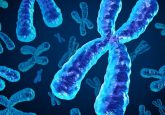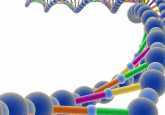Shot in the dark: uncovering the secrets in the genome of ‘The Prince of Darkness’

In 2010, two biotechnology companies conducted whole genome sequencing on Ozzy Osbourne’s DNA study to discover just what makes him unique and how he’s still alive. But, how did they do it and what did they find?
The Human Genome Project has been complete for 15 years; whole-genome sequencing (WGS) is cheaper than it has ever been, with companies such as Illumina promising the arrival of $100 WGS in the next few years. Companies are springing up offering genome sequencing for health reasons and vast WGS databases are being compiled. But just how much information can be gleaned from your genome, and what insights can it provide into the unique aspects of your character? In order to investigate this, we look back to one of the first, and possibly the most unique, people to have their genome sequenced: Ozzy Osbourne.
In 2003, the first whole human genome was sequenced by the International Human Genome Sequencing Consortium. It took them 13 years and cost in excess of US$2 billion. Six years later WGS took just 3 months to complete at a cost close to US$35,000. At this time, after a casual conversation between Knome (MA, USA) CEO Jorge Conde and a recent biographer for Osbourne, Chris Ayers, the idea to sequence the genome of a truly exceptional human being was formed.
Sequencing process
A partnership between Knome and Cofactor Genomics (MO, USA) was established to conduct the process. This gave Cofactor Genomics the opportunity to use the, then state of the art, Life Technologies’ (CA, USA) SOLiD4 sequencing technology for the first time in order to create the DNA sequence, which would then be analyzed and presented by Knome.
Cofactor used a sample of Osbourne’s blood and long insert mate pairs, and fragment read techniques in order to sequence his DNA over the course of 3 weeks. The genome was sequenced to a 13X coverage, less than the usual 30X, due to the time-sensitive nature of the study. Despite the reduced coverage, 70% of the 39 Gigabases (Gbp) of genetic information produced was mappable, a figure that Cofactors’ chief marketing officer Jon Armstrong described as “very good”.
This data was then sent to Matt Dyer of Life Technologies who, in just 10 hours, mapped the sequence data onto the Human Reference Genome (HG18) using the mapping software BioScope. SNPs and small indels were loaded onto BAM files and sent to Knome, while the complete sequence data was sent via a hard drive. Knome was then able to analyze the sequence data and study the DNA abnormalities to produce a detailed, annotated genome.
-
Next-generation sequencing with Mirna Jarosz
-
Can modern DNA sequencing solve history’s greatest murder mystery?
-
DNA sequencing
Variants of interest
There are many aspects of Osbourne’s life that are exceptional to the point of being almost unbelievable. Osbourne has not only endured 40 years of severe drug and alcohol abuse; he has also survived an ATV crash, which resulted in him being resuscitated twice and left him in a coma for 8 days; an airplane crashing into his tour bus and numerous other barely believable incidents and accidents. Knome, however, decided that the attributes that made Osbourne truly unique were his musical ability, Parkinson’s-like tremor and his relationship with drugs. With these factors in mind, Knome decided to focus their analysis on variants specific to nerve function.
They found 300,000 novel variants, an unremarkable figure at a time when only a few hundred genomes had been sequenced. The location of some of these variants, however, was particularly interesting.
Presenting the data at TEDMED 2010, Nathanial Pearson (Knome) revealed that Osbourne had novel variants in the OPRD gene, encoding opioid receptors; his ADH4 gene, which allows him to more efficiently metabolize alcohol; and polymorphism AVP1AR, which is associated with musical ability. Pearson also identified a variant, ARRB2, in the gene involved in methamphetamine metabolism, at a position usually occupied by a lysine that is highly conserved throughout the entire subphylum of vertebrates except, of course, for Ozzy Osbourne.
While examining the variants in the genes of Osbourne’s nervous system, the team from Knome identified a polymorphism in the CLTCL1 gene that results in the expression of a protein vastly different to the wild type. The CTLCL1 protein is involved in the transport of molecules across the cell membrane in a variety of cells, including neurons.
“Here’s a gene that’s central to how nerve cells communicate with each other, so it’s curious to us to see a grossly different protein variant. It’s thought-provoking,” speculated Pearson.
It is important to remember that while these variants can provide hints and indications of the science behind the enigma that is Ozzy Osbourne, direct causality cannot be claimed between each of these polymorphisms and his specific characteristics until such a time as each variant is studied and its resulting effects are elucidated. As Conde explained, “we cannot find the “Ozzy Osbourne” gene. But what we did see, as one of our scientists refers to it, is a lot of interesting smoke—but not any specific fire. We found many variants—novel variants—in genes associated with addiction and metabolism that are interesting but not quite definitive.”
Knome also found that Osbourne had two versions of the COMT gene called “worrier” and “warrior”. The COMT gene is responsible for the degradation of dopamine, epinephrine and norepinephrine and the two variants are associated with very different executive functions.
The warrior variant, characterized by a Val158 allele, is associated with improved dopaminergic transmission in times of increased dopamine release, leading to an advantage in coping with stressful situations. Conversely, the worrier variant, characterized by a Met 158 allele, confers a disadvantage in stressful situations but is associated with an increased ability for memory and attention tasks.
The fact that Osbourne has both alleles is incredibly rare and could account for how he has survived and adapted to a variety of situations and become the global superstar he is today. In his own words, Osbourne explains that “being a warrior — the crazy bat-eating Prince of Darkness — has made me famous. Being a worrier has kept me alive when some of my dearest friends never made it beyond their mid-twenties.”
-
Neighbors that sting: the mutation allowing highveld mole-rats to live in challenging conditions
-
Featured peer-reviewed article: Guidelines for optimized gene knockout using CRISPR/Cas9
-
Using genetic variation to map the human genome
Implications
So what do all these novel variants and abnormalities mean for ‘The Prince of Darkness’? Well in relation to drugs, analysis of the sequence data revealed that compared to the average person, Osbourne was six times more likely to be addicted to alcohol, 1.3 times more likely to be addicted to cocaine, 2.6 times more likely to experience hallucinations while smoking marijuana; and he was less likely to become addicted to heroin or tobacco. Interestingly, Osbourne’s main weakness was coffee, as he has a variant that severely slows his ability to metabolize caffeine.
Osbourne’s Parkinson-like tremor can potentially be explained by a change-of-function mutation in his TTN gene, which produces the large protein known as titin. Titin plays a vital role in the stability of sarcomeres in muscle cells and also has implications in nerve cells. The TTN mutation may also have an influence on Osbourne’s hearing; the rock star reports having tinnitus that can at times interfere with his hearing, but otherwise he can still hear well and doesn’t require a hearing aid, something that Conde finds intriguing: “here’s a guy who’s rocking heavy metal for decades and he can still hear. It would be interesting to know if this gene may impact that. [Or] his Parkinsonian tremor – it’s hard to know if that is from his genes or from years of hard living.”
While the technology has improved, and prices and sequencing times have dropped, our ability to understand the results and the implications of the polymorphisms and variants found are still reliant on the actual study of each gene, its function and how each potential alteration can affect it. Therefore, until a comprehensive database of each individual gene, its variant and their effects on its function has been compiled along with software that can analyze it, WGS will continue to provide data that can immediately identify interesting smoke… but not the fire.
Looking at this study cynically, it could be easily written off as a marketing gimmick for Knome and Cofactor Genomics. However, there are aspects of it that could be looked into more seriously and warrant a follow-up. The polymorphisms observed in Osbourne’s genome pose some interesting questions and further investigation could provide an insight into addiction, drug resistance and metabolism and nervous disorders.
WGS and its subsequent analysis have gone on to assist in the study of: numerous cancers, comparing tumor and patient genomes; antibiotic resistance; disease outbreaks and their management; Autism and the genetic diversity of the human race. It is, therefore, not inconceivable that this study could yield some new information if looked at again with new sequencing and analysis techniques.





